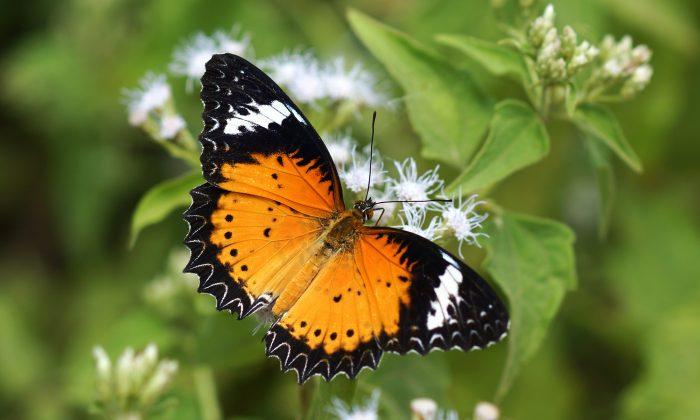Inmates at Coffee Creek Women’s Correctional Facility in Wilsonville, Oregon, have been working in collaboration with the Oregon Zoo to bring the Taylor’s checkerspot butterfly back from the brink of extinction. The project, supported by U.S. Fish and Wildlife Service (USFWS) and the Institute for Applied Ecology, has reared and released nearly 750 Taylor’s checkerspots back into the wild since the beginning of 2019.
In the last week of March 2019, Coffee Creek inmates transferred 476 growing caterpillars back to the conservation biologists at USFWS. They were released into the western Oregon prairies, and an additional 246 will be released in the first week of April. The project’s inaugural caterpillar release in Oregon occurred in 2018 when 562 prison-reared caterpillars were successfully reintroduced into their natural habitat.
Coffee Creek’s butterfly conservation lab launched in May of 2017. Zoo staff visited the prison and lent their expertise to workshops with the inmates, during which time the inmates were taught how to raise larvae. A year later, the project expanded to include lessons on caring for adult female Taylor’s checkerspot butterflies. The females are vital for their role in laying the thousands of eggs needed for the successful long-term reintroduction of the species.
“Inmates ... are eager to share what they’ve learned with their loved ones,” Naseth shared. “That has the wonderful ripple effect of more and more people in our communities caring about the future of these butterflies.”
But it’s not easy. The project has necessitated a wealth of expert attention and the commitment of a reliable team of inmates who have shown dedication to the cause.
One of the most complicated and time-consuming tasks within the project is feeding the larvae, which require almost constant sustenance. They won’t eat just anything, either: the perennial herb plantago is the only meal on the menu. A team of inmates has been specially dedicated to the maintenance of the 2,200 plantago plants that are needed to feed the insatiable larvae.
“We are exceptionally proud of the quality of larvae being released this year,” Naseth shared.
Since 2004, Oregon Zoo has reared over 28,000 checkerspot larvae for intended release in the region.





